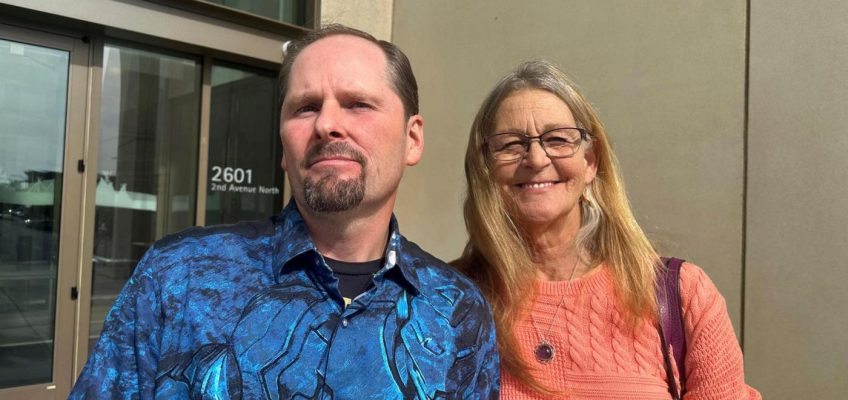By MICHAEL PHILLIS and JENNIFER McDERMOTT
President Donald Trump began dismantling his predecessor’s climate change and renewable energy policies on his first day in office, declaring a national energy emergency to speed up fossil fuel development – a policy he has summed up as “drill, baby, drill.”
Related Articles
House Democrat introduces bill to reinstate veterans fired from the federal government under Trump
Trump administration creates registry for immigrants who are in the US illegally
The Trump administration sets the stage for large-scale federal worker layoffs in a new memo
The National Archives is nonpartisan but has found itself targeted by Trump
US and Ukraine near an economic deal with mineral rights but no security promise, officials say
The declaration calls on the federal government to make it easier for companies to build oil and gas projects, in part by weakening environmental reviews, with the goal of lowering prices and selling to international markets.
Democrats say that’s a sham. They point out that the U.S. is producing more oil and natural gas than any other country and the Biden administration’s Inflation Reduction Act boosted renewable energy at a critical time, creating jobs and addressing the climate change threat – 2024 was Earth’s hottest year on record amid the hottest 10-year stretch on record.
Democrats were expected to offer a resolution in the Senate on Wednesday to terminate Trump’s declaration, a move likely to be only symbolic given their minority status. Meanwhile, the Trump administration has already made the U.S. an even friendlier environment for fossil fuels. Congress is helping, too, with the House set to vote on a measure to repeal a Biden administration-era methane fee on oil and gas producers.
Here are some ways the Trump administration has done so:
Lifting a pause on LNG exports
The Biden administration last year paused evaluations of new liquefied natural gas (LNG) export terminals. That pleased environmentalists concerned that a big surge in exports would contribute to planet-warming emissions. The pause didn’t stop projects already under construction, but it delayed consideration of new projects.
Trump reversed that pause.
On Tuesday, oil and gas giant Shell said global LNG demand is forecast to rise by around 60% by 2040.
The United States is expected to play a major role in meeting that demand, with its export capacity expected to double before 2030, according to the U.S. Energy Information Administration.
“I think investors have become much more comfortable that they can move towards final investment decisions without the concerns that they had over the last four years about potential roadblocks,” said Christopher Treanor, an energy and environmental attorney at the law firm Akin.
Drilling expansion
Trump has opened more land for oil and gas lease sales, shifting away from Biden’s efforts to protect environmentally sensitive areas like Alaska’s National Wildlife Refuge and to prevent large swaths of ocean from being available for offshore drilling, including major areas off coasts in the Pacific, Atlantic and parts of Alaska.
Environmental groups are suing to stop Trump’s moves.
Expanding the area available for companies to lease and drill doesn’t necessarily mean that more oil and gas will be produced. When leases were made available in the Artic National Wildlife Refuge, for example, only smaller companies bid and there were no buyers for a second lease sale.
Army Corps appears ready to help projects sidestep the Clean Water Act
The Army Corps of Engineers marked hundreds of Clean Water Act permits for fast-tracking, citing Trump’s order on energy, then removed that notation in its database. The agency said it needed to review active permit applications before publishing which ones will be fast-tracked.
“They don’t seem to be backing off,” said Tom Pelton, spokesman with the Environmental Integrity Project. “They are just going to refine the list.”
Many of the permit applications that had been listed for expediting are for fossil fuel projects, but some others have nothing to do with energy, including a housing subdivision proposed by Chevron in southern California, according to the Environmental Integrity Project.
David Bookbinder, the organization’s director of law and policy, said the Trump administration is using the “pretext of a national energy emergency” to ask a federal agency to circumvent environmental protections to justify building more fossil fuel power plants. Bookbinder said there’s no shortage of energy.
Slashing the federal workforce
Pat Parenteau, professor emeritus at Vermont Law & Graduate School, said Trump’s policy changes aren’t nearly as important as the deep cuts to the federal government that eliminate vital expertise.
“I think they are going to accomplish what no other administration has been able to do in terms of crippling the institutional capacity of the federal government to protect public health, to conserve national resources to save endangered species,” he said. “That is where we are going to see long-term, permanent damage.”
Trump’s energy emergency calls, for example, for undermining Endangered Species Act protections to ensure fast energy development, even assembling a rarely used committee — the so-called “God Squad” — that could have authority to dismiss significant threats to species. That move was coupled with recent deep cuts to the Fish & Wildlife Service, which administers the law.
Parenteau said some species are likely to go extinct.
Executive orders take aim at renewables
Trump also targeted wind energy with an order to temporarily halt offshore wind lease sales in federal waters and pause federal approvals, permits and loans for projects both onshore and offshore.
In another order, he listed domestic energy resources that could help ensure a reliable, diversified and affordable supply of energy. Solar, wind and battery storage were omitted, though solar is the fastest-growing source of electricity generation in the United States. Trump has vowed to end tax credits for renewables as well, which would push up prices.
Substantially slowing renewables could leave the U.S. wedded to coal and gas for far longer as coal plants are extended and new gas plants are built, said David Shepheard, partner and energy expert at the global consultant Baringa.
Shepheard said the U.S. is facing unprecedented growth in electricity demand largely to meet needs from data centers and artificial intelligence, and increasingly the deck is stacked against renewables to meet it.
A Baringa analysis found Trump’s policies will drive up emissions and put the agreed-upon international climate threshold further out of reach.
Associated Press writers Matthew Daly and Patrick Whittle contributed reporting.
The Associated Press’ climate and environmental coverage receives financial support from multiple private foundations. AP is solely responsible for all content. Find AP’s standards for working with philanthropies, a list of supporters and funded coverage areas at AP.org.




